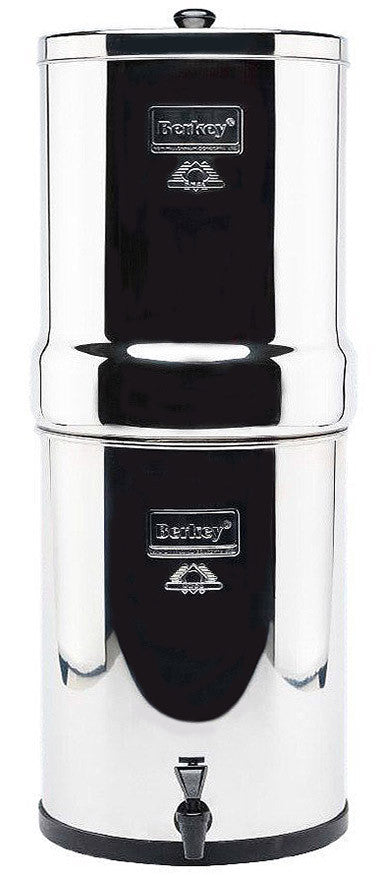
The Safe Drinking Water Act was launched in 1974 and amended in 2016. It was made to ensure public safety in the district's drinking water distribution.
The government uses suitable treatments to control and eradicate contaminants for public safety consumption, which is considered one of our basic needs because it comprises almost 78% of the human body.
Unfortunately, many water sources are around us, but they contain naturally occurring contaminants and toxic chemicals that are dangerous to public health.
Water contains healthy minerals and some waterborne contaminants, such as vinyl chloride, cadmium, copper, and lead.
Some are naturally occurring, but some may be found in water due to improper ways of distributing them to the public, such as piping and poor plumbing systems wherein rust and other metal contaminants are present along the way.
Metals can cause diseases, from simple to chronic. The government considers these metals the top priority contaminants to be removed, and it is very particular about them. The government ensures safety and provides the public with safe drinking water.
As we all know, there are many water contaminants that you must be aware of. One of them is vinyl chloride. It is a colorless organic gas with a sweet odor that, with too much exposure to it or excess intake through drinking water, can increase the risk of cancer.
Cadmium is also one drinking water contaminant the EPA is very particular about. It is a metal found in natural deposits such as ores that, if taken in excess, can be a great hazard because it can cause kidney damage.
Copper is one of them, too! It is a naturally occurring metal on rocks, soil, plants, and water. Its presence in your drinking water is not good for your health. It can cause vomiting, diarrhea, and stomach cramps.
Lately, studies show that it can also be associated with liver damage and kidney diseases as well.
According to SDWA, lead is a toxic metal and the top toxic contaminant of drinking water. Lead in drinking water can cause diseases, behavioral problems, and learning disabilities.

Under the Safe Drinking Water Act, the EPA or the Environmental Protection Agency must determine the level of contaminants in drinking water. It sets levels of protection by regulating and removing their presence in drinking water to prevent harmful health effects on the human body.
SDWA's top priority is detecting and removing unhealthy contaminants from public drinking water using cost-effective treatments. In addition to regulating and removing them, SDWA sets methods for measuring drinking water contaminants and provides protection systems.
SDWA sets two drinking water standards: primary and secondary. The primary standards focus on legal observance and guidelines for public water systems to provide the public with potable, safe drinking water.
The secondary standard only implies guidelines for contaminants that may cause cosmetic and aesthetic effects on water. Some states push secondary standards as a must for public drinking water, whereas some states don't
EPA also sets standards for pretreatment techniques such as disinfection and filtration, Lleadand Copperdetection, and pure treatment chemicals. The EPA always considers the best possible treatment technique to provide the public with potable, safe drinking water.
Corrosive water contains toxic metals that need to be removed because they can cause great damage to public health, such as lead, copper, zinc, and other metals. Today, consumers don't easily understand the potential of lead as one of the water contaminants that are a health hazard.
People assume that public water is already treated, so they assume it's safe enough. The truth is that lead can still be a threat during public distribution through the piping system.
Lead contamination can cause lead poisoning, which is especially dangerous to children. Too much lead exposure can deeply affect the body and may damage some major organs, such as the brain, kidneys, and bones.
The problem with lead exposure nowadays is that it can't be easily controlled. This is because of the poor public distribution of water to homes. However, some primary treatments for lead removal are available.
One is corrosion control, piping updating or checkup, and using suitable purification and filtration systems in homes.
The EPA sets two standards for measuring water: the maximum contaminant level (MCL) and the maximum contaminant level goal (MCLG).
The MCL is the maximum chemical concentration allowed in public drinking water systems, and the MCLG should normally be as close as possible to the MCL.

The Safe Drinking Water Act was updated and amended on May 9, 2016. It was passed as the Safe Drinking Water Act Improved Compliance Awareness Act.
This act controls and requires public water systems to notify the public about lead contaminant levels that exceed the national primary drinking water regulation limit.
The EEPA is Responsible for notifying or raising awareness of violations by states or public water systems that have reached an excessive lead level.
As amended in 2016, lead-free plumbing requirements are already considered one of those primary water regulations. They give importance to lead contamination and other metals that are not specified and given importance in the original Safe Drinking Water Act of 1974.
The federal drinking water standards are consistent or organized into six important groups: microorganisms, disinfectants, disinfection byproducts, inorganic and organic chemicals, and radionuclides.
SDWA is considered the principal federal law ensuring safe public drinking water distribution. Under this act, the Environmental Protection Agency sets standards for water quality and ensures that they are implemented throughout the states, localities, and even with water distributors or suppliers.
The act covers all public water systems but doesn't cover private wells and bottled water because the Food and Drug Administration covers bottled water.
Lastly, for monitoring, compliance, and enforcement, the SDWA still requires them to identify some unregulated contaminants that may still be present in public drinking water and need to be regulated.
It is still wise to consider using a suitable and perfect home purification or filtration system.
← Older Post Newer Post →





